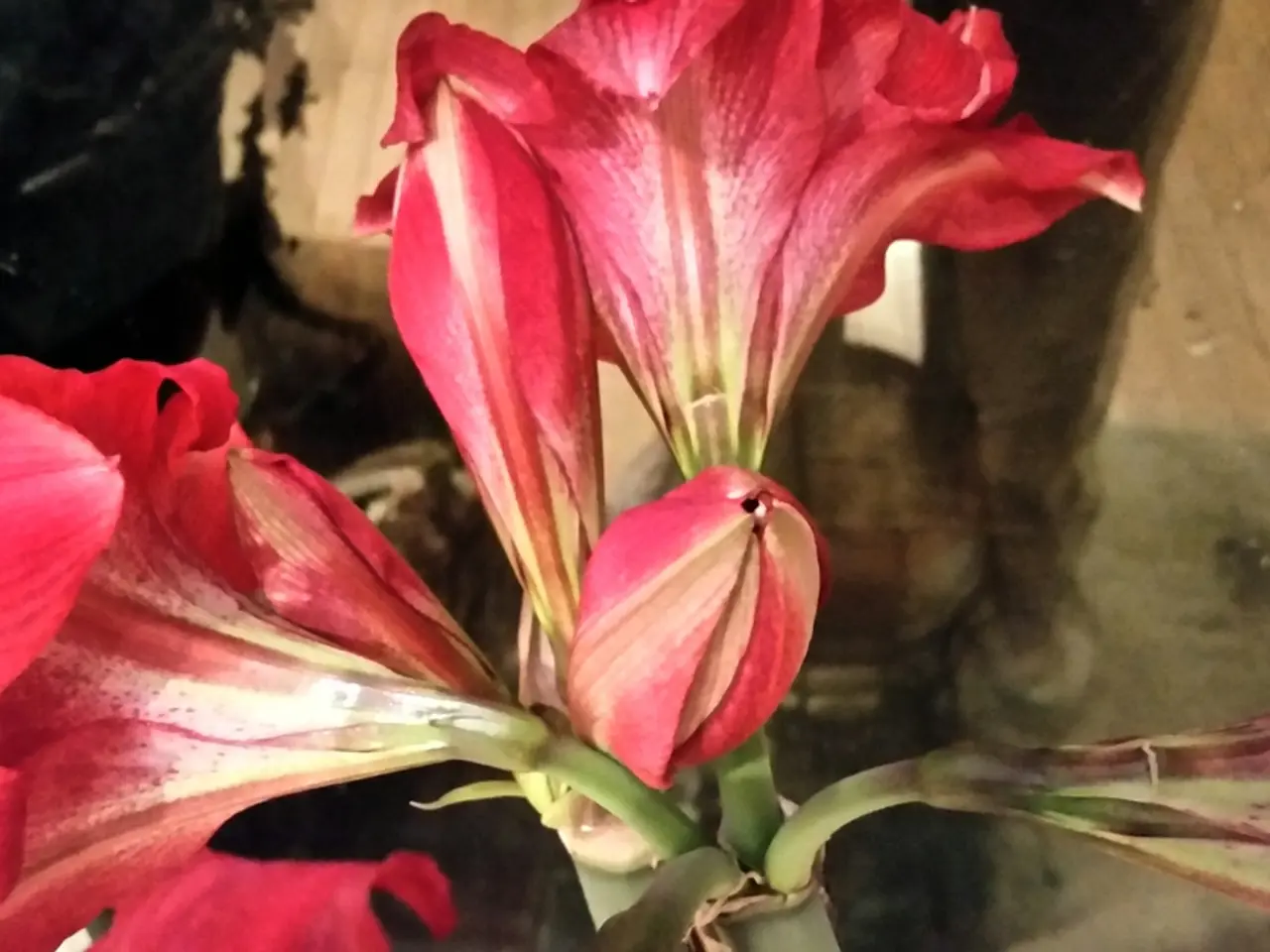Seasonally Appealing Blossoms Encouraging Aviary Visitors: Flowers that Entice Birds Throughout the Year
Gardening for Birds: Attracting Feathered Friends with the Right Flowers
Creating a garden that draws a variety of birds can foster a diverse backyard ecosystem and provide a sense of comfort and safety for these winged creatures. Here are some flowers that are known to attract birds, each offering food, shelter, or both.
Easy-to-Grow Flowers
Some flowers, like bee balm and coneflower, are considered easy to grow and resistant to disease. These plants not only brighten up your garden but also attract a variety of bird species. Bee balm, with its nectar-rich, tubular blooms, is particularly favoured by hummingbirds. Coneflower, or Echinacea, is prized for its vibrant color and prolific production of flowers, attracting various bird species with its dependable seed production from early summer to fall.
Seed-Laden Flowers
Sunflowers are quintessential summer garden plants that attract native wildlife, including birds, due to their seed production. Varieties with high oil content are particularly popular. Once the blooms fade, the large seed heads become natural foraging spots for birds, especially seed-eaters.
Fruit-Bearing Plants
Winterberry bushes provide a vital source of food for non-migrating bird species throughout winter with their bright red berries held on branches year-round. Mulberry, another fruit-bearing plant, is attractive to birds. However, some species can be invasive, so it is recommended to grow only native species, with red mulberries among the best options.
Nectar-Rich Flowers
Honeysuckle and Agastache are flowers with tubular shapes and abundant nectar, favoured by hummingbirds due to their beak shape and high-energy intake needs. Lavender, while more noted for attracting bees and butterflies, also contributes to the general pollinator ecosystem, indirectly drawing birds that feed on insects.
Plants for All Seasons
Viburnum, often used in mixed borders or privacy hedges, provides food for birds with its brightly colored berries that last throughout fall and winter, and also serves as shelter during inclement weather. Liatris plants, when allowed to set seed, further attract various species of songbirds, such as goldfinches and titmice. Allowing each bloom to set seed encourages more bird visits from late summer through fall.
In summary, native flowering plants that produce vibrant flowers followed by nourishing seeds or berries, and those with nectar accessible to specialized bird species like hummingbirds, attract the most birds to gardens and yards. By choosing the right flowers, you can create a thriving bird sanctuary in your own backyard.
[1] Birds and Blooms, "10 Flowers That Attract Birds," https://www.birdsandblooms.com/articles/flowers-that-attract-birds/
[2] The Spruce, "15 Bird-Friendly Plants for Your Garden," https://www.thespruce.com/bird-friendly-plants-for-your-garden-3127293
[3] Audubon, "Plant Native to Attract Birds," https://www.audubon.org/news/plant-native-attract-birds
[4] National Wildlife Federation, "Bird-Friendly Garden Plants," https://www.nwf.org/Garden-for-Wildlife/Certification/Plant-List/Plant-List-by-Category/Bird-Friendly-Garden-Plants
[5] National Audubon Society, "Native Plants for Birds," https://www.audubon.org/native-plants
Gardening can attract a diverse range of birds, enriching your backyard ecosystem and providing comfort for feathered friends. Easy-to-grow flowers like bee balm and coneflower are resistant to disease and attract various bird species, with bee balm's nectar-rich blooms particularly favored by hummingbirds. Sunflowers, quintessential summer plants, attract native wildlife due to their high seed production.
Winterberry bushes and mulberries are fruit-bearing plants that offer food for non-migrating birds during winter. Honeysuckle and Agastache, known for their tubular shapes and abundant nectar, are favored by hummingbirds. Lavender, although more noted for attracting bees and butterflies, contributes to the pollinator ecosystem, indirectly drawing birds that feed on insects.
Viburnum and Liatris, suitable for mixed borders or privacy hedges, provide food and shelter for birds during inclement weather. Allowing Liatris to set seed attracts various songbirds such as goldfinches and titmice.
By cultivating the right flowers, you can create a thriving bird sanctuary, with native flowering plants producing vibrant flowers followed by nourishing seeds or berries, and those with nectar accessible to specialized bird species like hummingbirds, attracting the most birds to gardens and yards. For more information on bird-friendly plants, refer to the resources below.
[1] Birds and Blooms, "10 Flowers That Attract Birds," https://www.birdsandblooms.com/articles/flowers-that-attract-birds/
[2] The Spruce, "15 Bird-Friendly Plants for Your Garden," https://www.thespruce.com/bird-friendly-plants-for-your-garden-3127293
[3] Audubon, "Plant Native to Attract Birds," https://www.audubon.org/news/plant-native-attract-birds
[4] National Wildlife Federation, "Bird-Friendly Garden Plants," https://www.nwf.org/Garden-for-Wildlife/Certification/Plant-List/Plant-List-by-Category/Bird-Friendly-Garden-Plants
[5] National Audubon Society, "Native Plants for Birds," https://www.audubon.org/native-plants
besides, home-and-garden improvements can boost the value of your property and offer opportunities for personal growth, such as learning new skills in carpentry, gardening, or DIY projects. The lifestyle of home improvement enthusiasts can expand into areas like food-and-drink, cooking, and family-dynamics as they explore new recipes and host gatherings, effectively enhancing their own personal-growth.
Seeking out deals-and-discounts on gardening tools, cooking appliances, and DIY materials can help stretch your budget during these projects, while the prospect of job-search or career-development in these fields offers exciting possibilities for the future. Learning more about gardening, home improvement, and cooking online through resources like online-education, product reviews, and job-search platforms can open doors to new opportunities in the lifestyle industry, such as electric vehicles, adventure-travel, cultural-travel, and online-education.
Setting lifelong learning goals, engaging in skills-training, and pursuing productivity techniques can help you navigate your journey in the lifestyle sector, optimizing your garden, cooking, and home for maximum enjoyment and efficiency. Striking a balance between work, relationships, pets, hobbies, and self-care is essential for maintaining overall well-being, as you cultivate a garden for birds, tend to your home, and embark on adventures both near and far.
Mindfulness practices like meditation, yoga, and journaling can help you remain focused and centered during this tremendous period of growth, ensuring that your journey towards a fulfilling lifestyle remains grounded in self-awareness and a love for learning. In this way, you can not only create a thriving garden sanctuary for birds but also cultivate a rich, nourishing lifestyle for yourself, filled with adventure, productivity, personal growth, and mindfulness.





